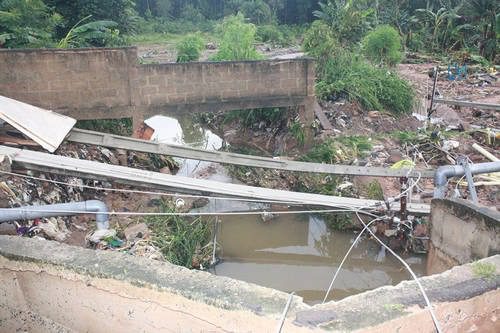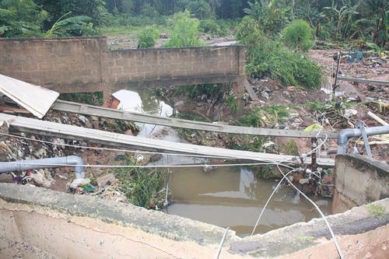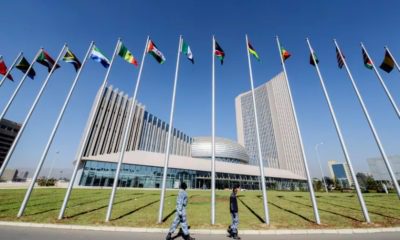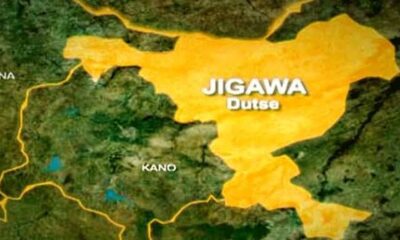Democracy & Governance
Bring Back Our Electricity Supply -By Oluwole Adeuyi

The Nigerian electricity supply sector is on the brink of a total collapse! At present, the average electricity generation is about 1327 megawatts (MW) out of a total installed capacity of about 7,445 MW. More alarming is the fact that about 75 million out of 170 million Nigerians have no access to modern electricity services. This article outlines some key solutions to
avert the imminent national darkness and action points to deliver safe, secure and sustainable electricity supply services to our homes and businesses.
Electricity supply systems consist of generation stations, transmission systems and distribution networks. At the generation layer, the Nigerian electricity generation mix consists mainly of hydro and thermal power plants.
Hydro power plants convert the potential energy of a water head into electricity and their output power depends on seasonal variations in water levels. Currently, Nigeria has about 2,000 MW of installed hydro power generation capacity. Thermal power plants burn natural gas and convert thermal energy into electrical power. There are about 12,000 MW of thermal power generation capacity installed or under-construction at various locations, as shown in the map above. Most of these thermal power plants receive their gas supply from the Nigerian gas supply system.
The Nigerian gas supply system is formed by gas pipelines, compressor stations and gas terminals. It is prone to attacks from vandals and has been the single weakest link in our generation layer. The act of sabotage by vandals is unacceptable and the Federal Government must take full responsibility for the security of our gas pipelines and electricity
transmission systems. The Nigerian Police and Civil Defence corps must be empowered and re-tooled to provide adequate security to these critical national infrastructures. Also, the politics of awarding oil and gas pipeline surveillance contracts to ex-militants must stop henceforth. If the penalty for breaking a law is lesser than the loot from the unlawful act, then people are encouraged break the law. Law enforcement agencies should apply greater punishments against the saboteurs.
Nigeria is currently the 5th largest exporter of Liquefied Natural Gas (LNG) in the world, according to the International Gas Union. In our opinion, a Virtual Pipeline System (VPS) could solve the problem of power outages during disruptions on the existing gas pipeline system and thereby keep the lights on. The virtual pipeline system is a concept that is intended to transport gas by road via trucks to decentralised gas storage facilities across the country, (much like the way petrol and diesel are transported today).
The gas can be transported and stored in liquefied or compressed form, vaporized or expanded and then fed back into the existing gas pipeline system. The gas storage facilities would be located close to the consumption centres, away from the identified “trouble spots” i.e areas with high incidents of vandalism. The capital costs of a virtual pipeline system would be less expensive than the opportunity cost of prolonged power cuts to the nation’s economy. Similar schemes exist in Russia, Norway, Poland and Turkey and there is a need to further analyse the economic benefits and market arrangements required to implement this solution in Nigeria.
What is more, the electricity generation mix should be diversified to include a significant share of different energy sources such as diesel, coal, biomass, wind and solar. Existing and future gas turbines should have the capability to operate on dual fuels, such as gas and diesel. Coal fired plants should be developed in coal-rich regions across the country. Biomass
plants are capable of burning wood briquettes, municipal solid waste or industrial waste to generate electricity and would help to reduce the volume of waste in refuse dumps and reduce carbon emissions. Wind power plants transform wind energy into electric power and can be installed in coastal
regions or locations with high wind speeds.
The Nigerian electricity transmission system connects power generation stations to distribution networks and operates at a high voltage of up to 330
kilovolts (kV) with a maximum transmission capacity of about 5,500 MW. This means that even if all the installed generation capacity to date were operational, the transmission capacity would be inadequate to transfer power across the country. The Transmission Company of Nigeria (TCN) should utilise Flexible Alternating Current Transmission (FACTs) devices to increase the transmission network capacity and enhance the system reliability, security and controllability. In the near future, the existing transmission network
could be reinforced using a higher transmission voltage of 750 kV or high voltage direct current transmission to facilitate efficient bulk power transmission over long distances.
Distribution companies (Discos) and private investors can provide modern energy services to households and businesses using our abundant solar energy resources. The two types of solar energy sources are photovoltaic (PV) and concentrating solar power (CSP). Solar PV systems directly convert energy from the sunlight into electricity and can operate together with an inverter and batteries to supply electricity to consumers. The PVs can be mounted on rooftops and easily installed in areas where rural electrification could be uneconomic.
Concentrating Solar Power (CSP) systems use a heat receiver to gather energy from the sun rays and produce a high temperature which can be utilised to boil water. The heat can also be used to generate electricity using steam turbines. CSPs could be a cost-effective solution for providing hot water, steam and electricity to our hospitals and heavy industries.
From the map shown above, it is clear that the existing generation is concentrated in the South with less than 1% of the installed generation capacity in the North West and North East. Fortunately, these regions have vast wind and solar energy resources which could be harnessed for large scale electricity generation together with conventional power plants. This would increase the installed generation capacity, reduce the load on the transmission grid and minimise the transmission losses as all the electrical power required in these regions would not be transmitted over long distances. It is true that the power sector has delivered ‘megawatts’ of excuses and disappointments to Nigerians. To bring back electricity supply to our homes and businesses, the Federal Government must urgently review progress in the power sector reforms and provide adequate security to national electricity
and gas supply infrastructure. All stakeholders must shape up and form synergies to develop the proposed virtual pipeline system for gas transport, diversify the electricity generation mix, increase the electricity transmission capacity and provide modern energy services to the all Nigerians. Public-private partnerships together with innovative financing instruments such as partial risk guarantees must be explored to develop new infrastructure projects. All stakeholders must act now, act together and act differently!
The authors are with the Energy Team and wrote in via
(energyteamng@gmail.com)



















